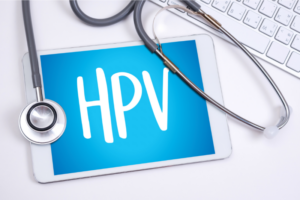
Human papillomavirus (HPV) has been a well-established risk factor for the development of cervical cancer. Given how common the group of viruses are, there have been major efforts in recent years to prevent infection through educational initiatives and vaccine campaigns.
A new study published in JAMA Pediatrics investigated whether rates of cervical cancer caused by HPV have changed. The results were promising, showing that in women between the ages of 15 and 39 in the U.S., this type of cervical cancer has in fact decreased since the HPV vaccine was introduced.
For their research, the scientists compared the rates of HPV-associated cervical cancer and mortality rates during the period ranging from January 2001 and December 2015 with those occurring during the period ranging from January 2010 and December 2017. They categorized women’s data based on age, with three groups: ages 15-24, ages 25-29, and ages 30-39.
The analysis showed that the HPV-associated cervical cancer incidence rate decreased in all age groups, with the largest decrease occurring in the 15-24 year old age group. Nearly 40% fewer HPV-associated cervical cancer cases were reported in this age group during the 2010-2017 period compared to the 2001-2015 period.
Women between the ages of 11 and 26 were first recommended to pursue HPV vaccination in the year 2006. The researchers therefore suggest that the decrease in HPV-associated cervical cancer that has occurred in recent years could at least in part be due to the deployment of the HPV vaccines. With more longitudinal data, Physicain and provider understanding of the role of the HPV vaccine in preventing cervical cancer will evolve.
Reference
Tabibi T, Barnes JM, Shah A, Osazuwa-Peters N, Johnson KJ, Brown DS. Human Papillomavirus Vaccination and Trends in Cervical Cancer Incidence and Mortality in the US. JAMA Pediatrics. Published online 2021. doi:10.1001/JAMAPEDIATRICS.2021.4807
